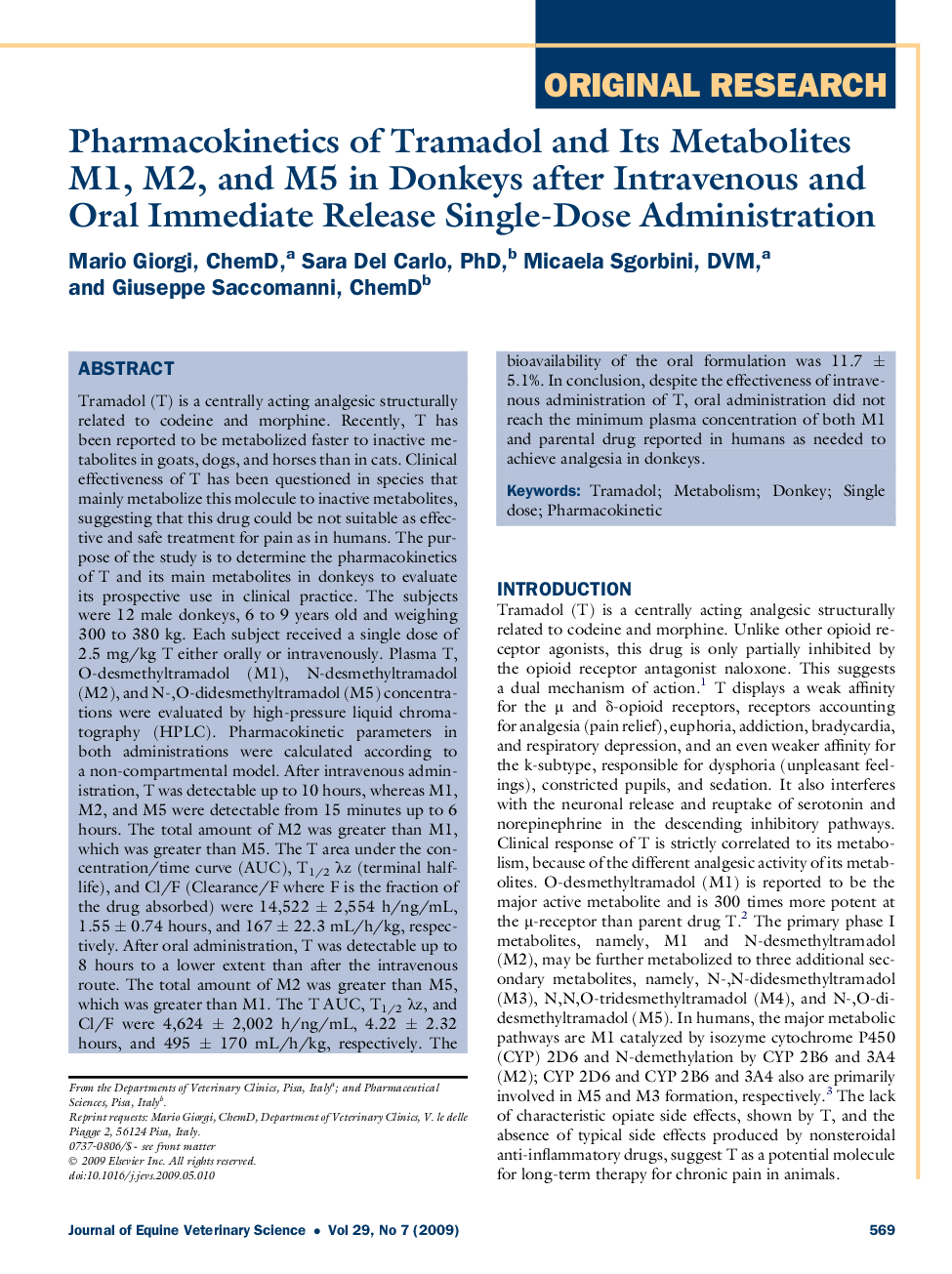| Article ID | Journal | Published Year | Pages | File Type |
|---|---|---|---|---|
| 2396404 | Journal of Equine Veterinary Science | 2009 | 6 Pages |
Tramadol (T) is a centrally acting analgesic structurally related to codeine and morphine. Recently, T has been reported to be metabolized faster to inactive metabolites in goats, dogs, and horses than in cats. Clinical effectiveness of T has been questioned in species that mainly metabolize this molecule to inactive metabolites, suggesting that this drug could be not suitable as effective and safe treatment for pain as in humans. The purpose of the study is to determine the pharmacokinetics of T and its main metabolites in donkeys to evaluate its prospective use in clinical practice. The subjects were 12 male donkeys, 6 to 9 years old and weighing 300 to 380 kg. Each subject received a single dose of 2.5 mg/kg T either orally or intravenously. Plasma T, O-desmethyltramadol (M1), N-desmethyltramadol (M2), and N-,O-didesmethyltramadol (M5) concentrations were evaluated by high-pressure liquid chromatography (HPLC). Pharmacokinetic parameters in both administrations were calculated according to a non-compartmental model. After intravenous administration, T was detectable up to 10 hours, whereas M1, M2, and M5 were detectable from 15 minutes up to 6 hours. The total amount of M2 was greater than M1, which was greater than M5. The T area under the concentration/time curve (AUC), T1/2 λz (terminal half-life), and Cl/F (Clearance/F where F is the fraction of the drug absorbed) were 14,522 ± 2,554 h/ng/mL, 1.55 ± 0.74 hours, and 167 ± 22.3 mL/h/kg, respectively. After oral administration, T was detectable up to 8 hours to a lower extent than after the intravenous route. The total amount of M2 was greater than M5, which was greater than M1. The T AUC, T1/2 λz, and Cl/F were 4,624 ± 2,002 h/ng/mL, 4.22 ± 2.32 hours, and 495 ± 170 mL/h/kg, respectively. The bioavailability of the oral formulation was 11.7 ± 5.1%. In conclusion, despite the effectiveness of intravenous administration of T, oral administration did not reach the minimum plasma concentration of both M1 and parental drug reported in humans as needed to achieve analgesia in donkeys.
